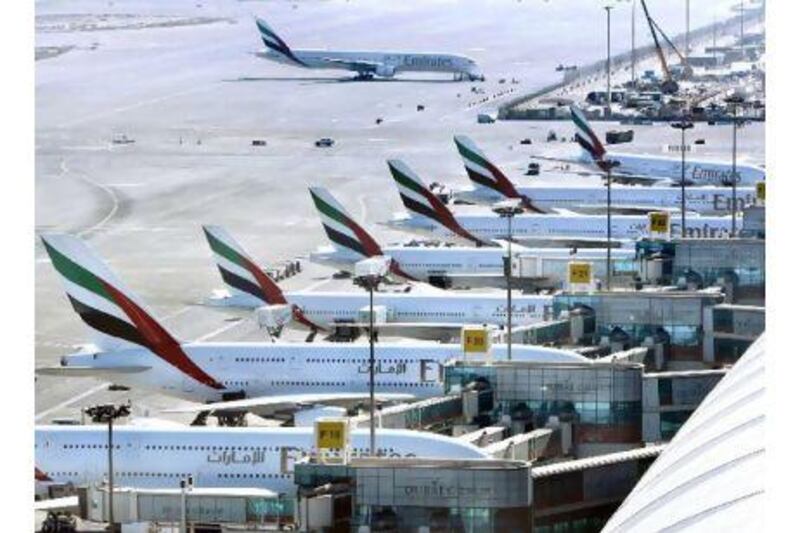Dubai has too many planes flying above and too few resolutions to the problem on the ground.
Air traffic management is the single biggest threat to the growth of the region's airlines, the chief executive of Dubai Airports said.
The rise of the Gulf carriers, including Emirates Airline, Qatar Airways and Etihad Airways, is putting huge strains not only on airport infrastructure but also on civil aviation administrators managing the area's airspace.
The number of flights in and out of Dubai are forecast to rise 82 per cent in 10 years, and the airport operator urged regional governments to address a co-ordinated approach to managing airspace in the same way they have discussed regional rail networks and a central bank.
"We simply cannot wait for the political wheels to grind so slowly," said Paul Griffiths. The chief executive of Dubai Airports was speaking at the Civil Air Navigation Services Organisation's (Canso) annual meeting in Bangkok yesterday. "We have to recognise that working together is the only way forward."
Aircraft movements in Dubai are now five times more numerous than 25 years ago, growing from 63,000 in 1985 to more than 307,000 last year. By 2020 aircraft movements in the emirate are forecast to surpass 560,000, with passenger numbers climbing to 98.5 million. Around that time Emirates Airline alone will be operating a fleet of 250 jets, up from 150 today and just 75 five years ago. Similar growth plans are being followed by other Gulf airlines.
"Previously most of aviation's congestion problems have existed on the ground, now the biggest strategic threat to the growth of aviation is in the air, Mr Griffiths said. "Bottlenecks are looming on the horizon."
Dubai Airports is finalising a detailed strategy to expand airspace capacity over the next decade.
Measures being considered include adjusting the sequencing of arrivals and departures, redesigning route structures and making better use of technologies such as performance-based navigation and communication navigation and surveillance systems that help aircraft to fly more efficiently.
Dubai Airports is also leading a joint Middle East airspace study in co-ordination with Canso, the UAE General Civil Aviation Authority (GCAA) and Dubai Civil Aviation Authority to work "across borders" to optimise the region's airspace structure, the operator said.
"We have an outdated route structure, fragmented airspace and there is a lack of effective co-ordination on a regional scale," Mr Griffiths said.
The GCAA has sought to manage its airspace through new high-tech systems and procedures. It has also forged agreements with neighbouring states and the UAE military, which controls wide swathes of the country's airspace.
Last month, the GCAA and Bahrain approved another "airway" for airlines to fly between the two countries, designated M600. "This airway would reduce traffic congestion, controller and pilot workload and enhance airspace capacity, which will improve air traffic safety," the federal agency said.
In 2009 the GCAA opened a Dh300 million (US$81.6m) air traffic control headquarters at the Sheikh Zayed Centre in Abu Dhabi, designed to handle projected increases in traffic for the next two decades.
The agency has also reached agreement with the Armed Forces to use previously restricted military airspace, including a corridor for commercial flights to and from Yemen and Africa.
igale@thenational.ae
Congested airspace 'threat to growth' says Dubai Airports chief
Dubai Airports wants action now to increase capacity and is urging regional governments to take a coordinated approach to airspace management.

More from the national




